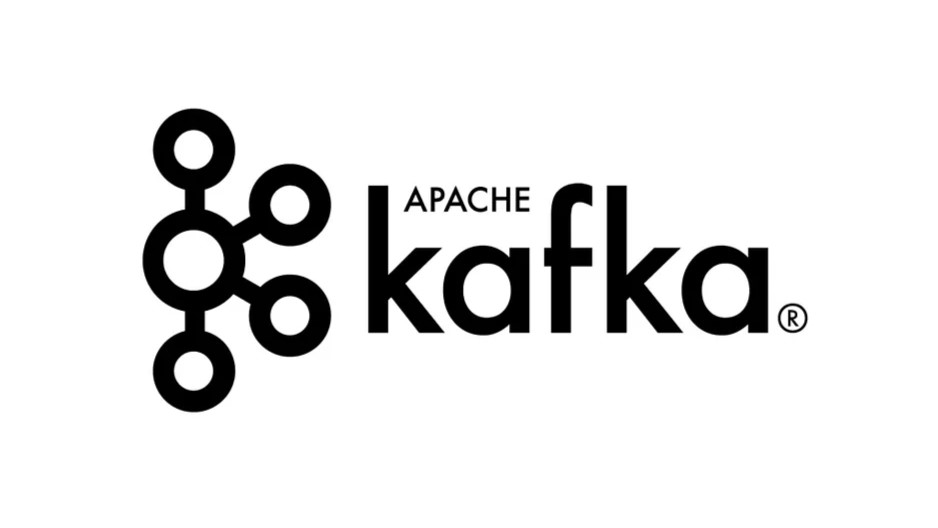
What Is Apache Kafka? Pros, Cons & Use Cases
Jerry Wallis
11 min read

In the rapidly evolving landscape of technology, where data is the new currency, the ability to manage and process vast amounts of information in real-time efficiently is becoming ever so vital. Enter Apache Kafka, a game-changing open-source distributed event streaming platform that has become the backbone of modern data-driven applications.
In an era where the pace of information exchange is breakneck, and businesses are racing to harness the power of data-driven insights, Apache Kafka stands as a beacon of innovation. With its seamless ability to capture, process, and transmit real-time data streams, Kafka has transformed how organisations interact with information, empowering them to make informed decisions at unprecedented speeds.
But beyond the buzz and allure, what exactly is Apache Kafka, and how can it revolutionise the way we handle data? To answer these questions, let’s delve into the core concepts and functionalities that define this remarkable platform.
In this extensive guide, we embark on a detailed journey to unravel the complexities, advantages, and applications of Apache Kafka, shedding light on its potential to reshape multiple industries and drive innovation.
Introduction: Decoding Apache Kafka 💽
Apache Kafka, originating from the visionary minds at LinkedIn, stands as a monumental leap forward in data processing and real-time streaming. It has emerged as a potent open-source event streaming platform beyond just data transmission, facilitating seamless data flow and integration across applications and systems. A masterstroke in modern data-driven enterprises, Apache Kafka, redefines how data is handled, setting the stage for revolutionary advancements.
Apache Kafka is a favoured choice among countless enterprises seeking high-performance data pipelines, streaming analytics, seamless data integration, and the backbone of their mission-critical applications. But what makes this platform so popular? Let’s discover by delving into some of its core features and capabilities in greater detail.
Decoupling Data Streams 🧑💻
Apache Kafka allows you to decouple data streams and systems, which means it’ll build an integration between your source and target systems, thus simplifying the synchronisation between the two channels.
A significant part of this is you can set up Apache Kafka to work with any data stream. For instance, through Kafka, you can record website events or pricing data into your analytics software or source user interactions into your CRM platform.
Unparalleled Data Flow ⏳
Apache Kafka facilitates unmatched data delivery speeds, with the ability to transmit messages at network-constrained throughput through a cluster of interconnected machines, achieving unprecedented latencies as low as 2 milliseconds.
Seamless Scalability ⬆️
By seamlessly scaling production clusters to accommodate up to a thousand brokers, Kafka can help accelerate operational productivity. With the capacity to handle trillions of messages daily (case in point – LinkedIn), manage vast petabytes of data, and oversee hundreds of thousands of partitions, this platform offers the unparalleled ability to expand elastically and contract storage and processing resources as and when needed.
Data Security and Persistence 🔐
Kafka allows for safe data storage within a distributed, fault-tolerant cluster, ensuring data permanence and continuity in the face of challenges.
Enhanced Availability ⏫
Extending clusters across availability zones or interconnecting separate clusters across diverse geographical regions isn’t a problem on Apache Kafka, empowering your architecture with heightened availability and resilience.
Integrated Stream Processing 🎏
Apache Kafka is arguably the best platform to unlock the potential of built-in stream processing. Doing so means your applications will be empowered to seamlessly handle streams of events with a rich set of functionalities, including joins, aggregations, filters, and transformations. Event-time and exactly-once processing are other capabilities of Kafka that ensure accuracy and reliability in your data operations.
Versatile Integration 📢
Kafka’s Connect interface is a versatile gateway to comprehensive integration, seamlessly connecting with hundreds of event sources and sinks, including the likes of Postgres, JMS, Elasticsearch, AWS S3, and more.
Multilingual Capabilities 🤟
Kafka has an extensive client library, allowing you to interact with, read, write, and process streams of events across a diverse spectrum of programming languages.
Thriving Ecosystem 💯
It’s important to remember that Apache Kafka is an open-source toolset. Therefore, you can leverage its thriving array of community-driven resources to bolster your overall experience with the platform.
Reliability and User-Centric Design 👨🎨
Kafka can be valuable for mission-critical scenarios due to its assurance of ordered delivery, zero message loss, and the efficiency of exactly-once processing.
Trusted by Industry Leaders 🏢
Kafka’s credibility shines through its adoption by thousands of organisations, spanning internet giants, automotive manufacturers, and stock exchanges. The platform boasts an impressive tally of over 5 million unique lifetime downloads.
Active Global Community 🕋
Kafka emerges as one of the Apache Software Foundation’s five most dynamic projects, with a dynamic presence manifested through numerous meetups worldwide.
Foundations Of Apache Kafka: Core Concepts and Essential Terminology ⛺️
Diving into the heart of Apache Kafka requires a firm grasp of its foundational concepts:
Let’s start with Topics dynamic channels that categorise and organise data streams. Next, we have Producers, which act as catalysts that initiate data flow into Kafka topics. Consumers are entities that subscribe to topics, extracting valuable insights.
Brokers are the operational backbone that manages storage, distribution, and communication. With Partitions, data is segmented into units within topics, enabling parallel processing. Offsets are numeric markers assigned to individual data entries within divisions. And finally, Kafka utilises Replication, a redundancy principle that duplicates data across multiple brokers.
The Apache Kafka Architecture Explained 🏛️
Now that we better understand the core concepts specific to Apache Kafka, it’ll be easier to grasp its intuitive architecture better. The architecture of Apache Kafka is a testament to its distributed nature and fault-tolerant design. It comprises a triumvirate of producers, brokers, and consumers working in tandem to ensure uninterrupted data flow.
In essence, producers inject data, brokers partition it, and consumers glean insights, enabling fluid data processing with unwavering integrity through replication.
How Does Apache Kafka Operate? ⚙️
Apache Kafka’s operational framework comprises a dual layer of storage and computation. This combination facilitates efficient real-time data intake, streaming data pipelines, and storage across distributed systems. This essentially empowers seamless data streaming between Kafka and external systems, simplifying real-time data management and scalability across diverse infrastructures.
Real-Time Scalable Processing ⏱️
A prerequisite trait of any robust data streaming platform is the capacity to promptly process and analyse generated data. Enter the Kafka Streams API – a potent, lightweight library enabling on-the-fly processing. It facilitates tasks like aggregation, setting windowing parameters, executing data joins within a stream and more. Notably, it’s Java-based and integrated with Kafka, sparing the need for additional clusters while maintaining your workflow’s integrity.
Apache Kafka’s core functionality lies in its unparalleled capability to process and transmit real-time data. This prowess is commonly leveraged in web applications requiring immediate data insights, such as fraud detection, stock market analysis, and IoT sensor data interpretation.
Kafka’s low latency of less than 10ms and exceptional throughput position it as an instrument of choice, delivering swift and precise insights from dynamic data streams.
Persistently Durable Storage 📦
Drawing inspiration from the distributed commit log concept inherent in distributed databases, Apache Kafka has a dependable storage mechanism. As a “source of truth,” Kafka proficiently distributes data across numerous nodes. This arrangement ensures high availability deployable within a single data centre or extended across multiple availability zones.
Publish and Subscribe Mechanism 🏃♂️
Central to its architecture is the foundational, immutable commit log. One can subscribe to it and publish data across various systems or real-time applications. Apart from conventional messaging queues, Kafka is a scalable, fault-tolerant distributed system. This adaptability enables its deployment in diverse applications, including Uber’s passenger and driver matching, British Gas’ real-time analytics and predictive maintenance in smart homes, and various real-time services across LinkedIn. Such unparalleled versatility makes Kafka an optimal choice, seamlessly scaling from individual applications to widespread enterprise implementation.
Diverse Industrial Applications: Unleashing Kafka’s Potential 🏭
Apache Kafka’s applications span across an array of industries and applications, each benefiting from its unique attributes:
Finance: Instantaneous transaction processing, risk evaluation, and fraud identification.
E-commerce: Monitoring customer behaviour, inventory optimisation, and seamless order processing.
Telecommunications: Network surveillance, call detail record analysis, and resilient billing systems.
Healthcare: Remote patient monitoring, holistic data integration across medical devices, and comprehensive health record management.
As a testament to Apache Kafka’s robust versatility, it is used by over 2000 large firms and enterprises and 35% of the Fortune 500 companies such as LinkedIn, Airbnb, Walmart, Netflix and Uber.
Use Cases Of Apache Kafka 👩💻
Kafka is a foundational tool for constructing real-time streaming data pipelines and dynamic streaming applications. Many practical Kafka use cases exist in the present landscape, catering to companies reliant on data and offering various feature-rich information-driven applications.
Data Pipelines 🪈
A streaming data pipeline within Apache Kafka encompasses ingesting data from sources into Kafka as it’s generated. Subsequently, this data flows seamlessly from Kafka to one or more target destinations.
Stream Processing 🌊
Stream processing entails various operations such as filtering, joining, mapping, aggregating, and other transformations. Enterprises harness these capabilities to fuel multiple use cases. Kafka Streams, a dedicated stream processing library designed for Apache Kafka, empowers businesses to perform real-time data processing.
Data Streaming Analytics #️⃣
Kafka’s capacity for high-throughput event delivery, combined with compatible open-source technologies like Druid, culminates in a potent Streaming Analytics Manager (SAM). Druid extracts streaming data from Kafka, enabling analytical queries. The journey begins with loading events into Kafka, buffering them within Kafka brokers before being consumed by Druid’s real-time workers.

Streaming ETL (Extract, Transform, Load) 🏋️♂️
Real-time ETL powered by Kafka encompasses diverse components and features, encompassing Kafka Connect source and sink connectors to efficiently consume and produce data from many databases, applications, or APIs. The optional Single Message Transform (SMT) feature enhances Kafka Connect’s capabilities, while Kafka Streams facilitates continuous real-time data processing at scale.
Event-Based Microservices 🔬
Renowned as the premier tool for microservices, Apache Kafka addresses microservices implementation concerns, simultaneously fostering key attributes such as scalability, efficiency, and speed. It enables inter-service communication while maintaining ultra-low latency and fault tolerance, making it an integral choice for event-driven microservices architectures.
Other Practical Applications of Apache Kafka 🤔
Kafka can be used to build a log aggregation tool to aggregate and centralise log data from different services and systems. Organisations also use Kafka for real-time streaming data analysis to gain insights and make informed decisions. Kafka can also be used in event-sourcing architectures to capture all changes to an application’s state.
Pros of Apache Kafka 👍
- Scalability: Apache Kafka’s architecture allows horizontal scaling, making it suitable for handling large amounts of data without compromising performance.
- Fault Tolerance: Kafka ensures data durability even during hardware failures, thanks to its replication mechanism.
- Real-time Data Processing: Kafka’s ability to process and transmit data in real time enables timely decision-making and analytics.
- High Throughput: With its efficient storage and retrieval mechanisms, Kafka can handle high-throughput data streams.
Cons of Apache Kafka 👎
Complexity: Due to its distributed nature, setting up and configuring Kafka can be complex, especially for beginners.
Resource Intensive: Kafka’s replication and storage mechanisms can be resource-intensive, requiring sufficient hardware resources.
Learning Curve: Developers familiar with Kafka’s concepts may face a steep learning curve when implementing and managing Kafka-based solutions. That said, Kafka has many great learning resources available for beginners.
To enhance your Kafka journey, comprehensive documentation, immersive online training, guided tutorials, enlightening videos, illuminating sample projects, and vibrant interactions are all available on Stack Overflow. So check them out if you want to make the most out of Kafka on your applications.
Conclusion – So, What Is Apache Kafka? 😎
In the grand tapestry of technology, few tools have the ability to shape the fabric of data management and processing, like Apache Kafka. As we conclude our exploration into its world, we find ourselves standing at the crossroads of innovation and insight. The journey through its features, advantages, drawbacks, use cases, and examples has illuminated the immense potential that Kafka brings to the table.
From facilitating real-time analytics that empowers businesses to make split-second decisions to its fault-tolerant architecture that ensures data integrity even in the face of adversity, Kafka embodies the spirit of modern data processing. Its applications span a wide spectrum, from e-commerce and financial services to the Internet of Things (IoT) landscape, touching the lives of industries and individuals alike.
As we move forward in the digital age, leveraging technology to enhance the customer experience becomes not just a competitive advantage but a necessity. Apache Kafka offers a pathway to achieving just that. Its power to seamlessly connect data sources and consumers, coupled with its ability to process and transmit information in real time, positions it as a catalyst for innovation. If you want to leverage intuitive technologies like Apache Kafka to level up your customer experience game, then book a discovery call with us today
Topics
Published On
August 25, 2023

